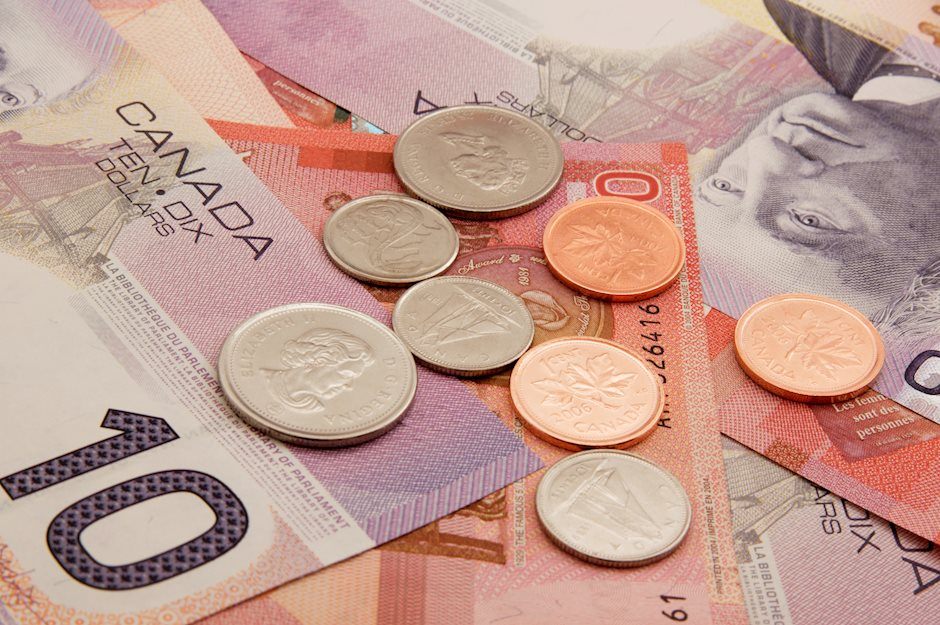USD/CAD slides back closer to mid-1.4000s amid modest USD weakness
- USD/CAD edges lower on Thursday and snaps a three-day winning streak amid a softer USD.
- Rebounding US bond yields lend support to the USD and the pair ahead of the OPEC+ meeting.
- Traders look to US Jobless Claims, though the focus remains on monthly jobs data on Friday.

The USD/CAD pair struggles to capitalize on its weekly gains registered over the past three days and attracts some sellers during the first half of the European session on Thursday. Spot prices slide closer to mid-1.4000s in the last hour, though any meaningful downfall still seems elusive ahead of the crucial monthly employment details from the US and Canada on Friday.
Heading into the key data risk, a modest US Dollar (USD) downtick is seen as a key factor exerting some downward pressure on the USD/CAD pair. That said, rebounding US Treasury bond yields, bolstered by expectations for a less dovish Federal Reserve (Fed), acts as a tailwind for the Greenback. Apart from this, subdued Crude Oil prices ahead of the OPEC+ meeting could undermine the commodity-linked Loonie and contribute to limiting losses for the USD/CAD pair.
Meanwhile, hawkish remarks from several FOMC members, including Fed Chair Jerome Powell, suggested that the US central bank will adopt a cautious stance on cutting rates. Adding to this, speculations that US President-elect Donald Trump's policies will reignite inflation might force the Fed to stop cutting rates or possibly raise them again. This assists the US Treasury bond yields to stage a modest bounce after their lowest closing levels in more than a month on Wednesday.
Crude Oil prices, on the other hand, struggle to gain any meaningful traction on the back of concerns over slowing oil demand, especially China – the world's top importer. That said, the worsening Russia-Ukraine conflict and increasing tensions in the Middle East, along with expectations that the OPEC+ will further delay plans to increase production until at least the second quarter of 2025, act as a tailwind for the commodity, though fail to influence the Canadian Dollar (CAD).
Traders now look to the release of the US Weekly Initial Jobless Claims data, which, along with the US bond yields, will drive the USD demand and provide some impetus to the USD/CAD pair later during the North American session. Apart from this, Oil price dynamics should contribute to producing short-term opportunities. The mixed fundamental backdrop, meanwhile, warrants some caution for aggressive traders and before positioning for any firm near-term direction.
Canadian Dollar FAQs
The key factors driving the Canadian Dollar (CAD) are the level of interest rates set by the Bank of Canada (BoC), the price of Oil, Canada’s largest export, the health of its economy, inflation and the Trade Balance, which is the difference between the value of Canada’s exports versus its imports. Other factors include market sentiment – whether investors are taking on more risky assets (risk-on) or seeking safe-havens (risk-off) – with risk-on being CAD-positive. As its largest trading partner, the health of the US economy is also a key factor influencing the Canadian Dollar.
The Bank of Canada (BoC) has a significant influence on the Canadian Dollar by setting the level of interest rates that banks can lend to one another. This influences the level of interest rates for everyone. The main goal of the BoC is to maintain inflation at 1-3% by adjusting interest rates up or down. Relatively higher interest rates tend to be positive for the CAD. The Bank of Canada can also use quantitative easing and tightening to influence credit conditions, with the former CAD-negative and the latter CAD-positive.
The price of Oil is a key factor impacting the value of the Canadian Dollar. Petroleum is Canada’s biggest export, so Oil price tends to have an immediate impact on the CAD value. Generally, if Oil price rises CAD also goes up, as aggregate demand for the currency increases. The opposite is the case if the price of Oil falls. Higher Oil prices also tend to result in a greater likelihood of a positive Trade Balance, which is also supportive of the CAD.
While inflation had always traditionally been thought of as a negative factor for a currency since it lowers the value of money, the opposite has actually been the case in modern times with the relaxation of cross-border capital controls. Higher inflation tends to lead central banks to put up interest rates which attracts more capital inflows from global investors seeking a lucrative place to keep their money. This increases demand for the local currency, which in Canada’s case is the Canadian Dollar.
Macroeconomic data releases gauge the health of the economy and can have an impact on the Canadian Dollar. Indicators such as GDP, Manufacturing and Services PMIs, employment, and consumer sentiment surveys can all influence the direction of the CAD. A strong economy is good for the Canadian Dollar. Not only does it attract more foreign investment but it may encourage the Bank of Canada to put up interest rates, leading to a stronger currency. If economic data is weak, however, the CAD is likely to fall.
Author

Haresh Menghani
FXStreet
Haresh Menghani is a detail-oriented professional with 10+ years of extensive experience in analysing the global financial markets.

















